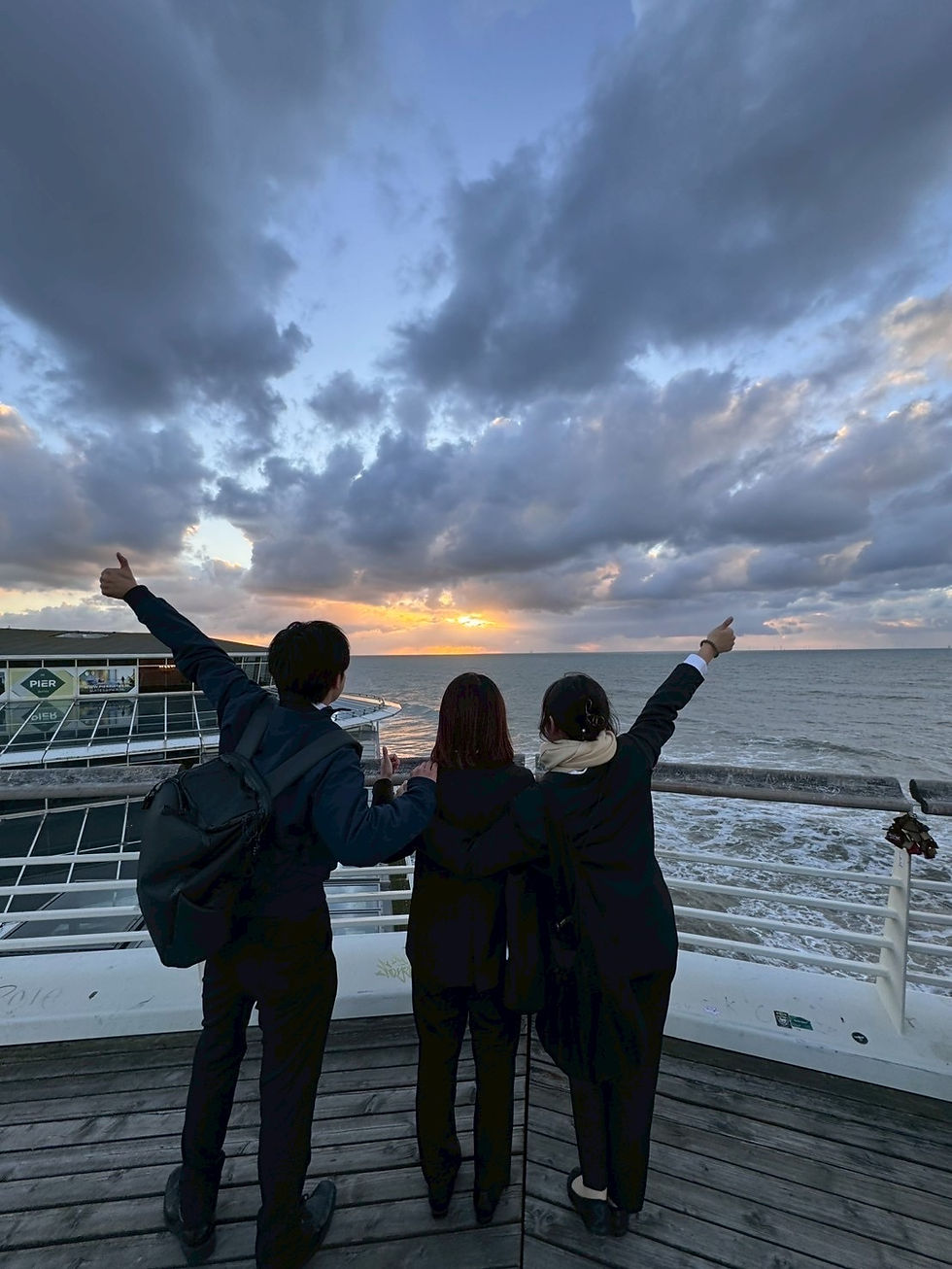A Journey Through Culture and Memory: My Hobby of Collecting Goshuin
- Administrator
- 6月29日
- 読了時間: 2分
B4 Tokiwa Takahashi
Among my most meaningful personal pursuits is collecting Goshuin—handwritten stamps and calligraphy given at Shinto shrines across Japan. These are not simply mementos; they are living cultural expressions, combining artistry, history, and spirituality in each brushstroke. For me, they represent a personal record of discovery—both outward, through travel, and inward, through reflection.
While Goshuin can also be received at Buddhist temples, I focus mainly on Shinto shrines. I find each shrine to be a unique cultural site, deeply rooted in regional history, mythology, and seasonal rituals. Standing before the offering counter, watching the priest or shrine maiden quietly prepare the ink and delicately inscribe the page, I feel a sense of stillness and reverence that modern life rarely affords.
Kyoto, with its deep spiritual heritage, has been a central destination in my Goshuin journey. I have visited shrines such as Fujinomori Shrine, known for its connection to horses and victory; Awata Shrine, tucked away in the quiet streets of Higashiyama; Kitano Tenmangu, where students pray for success in their studies; Kenkun Shrine, which honors the warlord, Oda Nobunaga; and Toyokuni Shrine, built in memory of Toyotomi Hideyoshi. Each site offered not only a beautifully crafted Goshuin, but also a distinct atmosphere that lingered in my mind long after I left.

One particularly memorable experience was during a Goshuin campaign in Kyoto, where certain shrines offered limited-edition stamps in collaboration with famous Japanese swords associated with their history. As someone interested in traditional culture, this added a personal layer of meaning. The stamps featured artistic elements inspired by the swords—names, patterns, and sometimes small emblems—blending centuries of history with a modern appreciation of heritage.

My travels have also taken me to Ashikaga in Tochigi Prefecture, a town renowned for its rich spiritual and academic traditions. There, I visited Orihime Shrine, dedicated to the goddess of weaving and romantic destiny. Situated on a hillside, the shrine offers a spectacular view and is especially atmospheric during the Tanabata season. The Goshuin I received was adorned with star motifs, representing wishes sent to the heavens. The priest kindly shared local lore and festival customs, which made the visit even more intimate and enlightening.

In Ashikaga, I also explored other sacred sites such as Ise Shrine, a peaceful neighborhood shrine with a strong connection to the local community, and the small Inari Shrine located within the historic Ashikaga School, known as Japan’s oldest academic institution. The contrast between the scholarly setting and the vermilion torii of the Inari Shrine reminded me of how spirituality and learning have long been intertwined in Japanese culture. Receiving Goshuin from such places felt like stepping into the footsteps of countless people from the past—students, priests, travelers—each seeking meaning in their own way.
Through Goshuin collecting, I’ve come to see travel not simply as movement from place to place, but as a form of mindful engagement. Each shrine visit invites quiet observation, personal reflection, and deeper cultural understanding. The pages of my Goshuincho have become more than a collection—they are a living journal of encounters, moments, and questions that continue to shape me.
As I continue this journey, one shrine and one Goshuin at a time, I hope to deepen not only my appreciation for Japanese tradition, but also my understanding of how culture lives on—through places, through people, and through the ink that carries their stories.




コメント